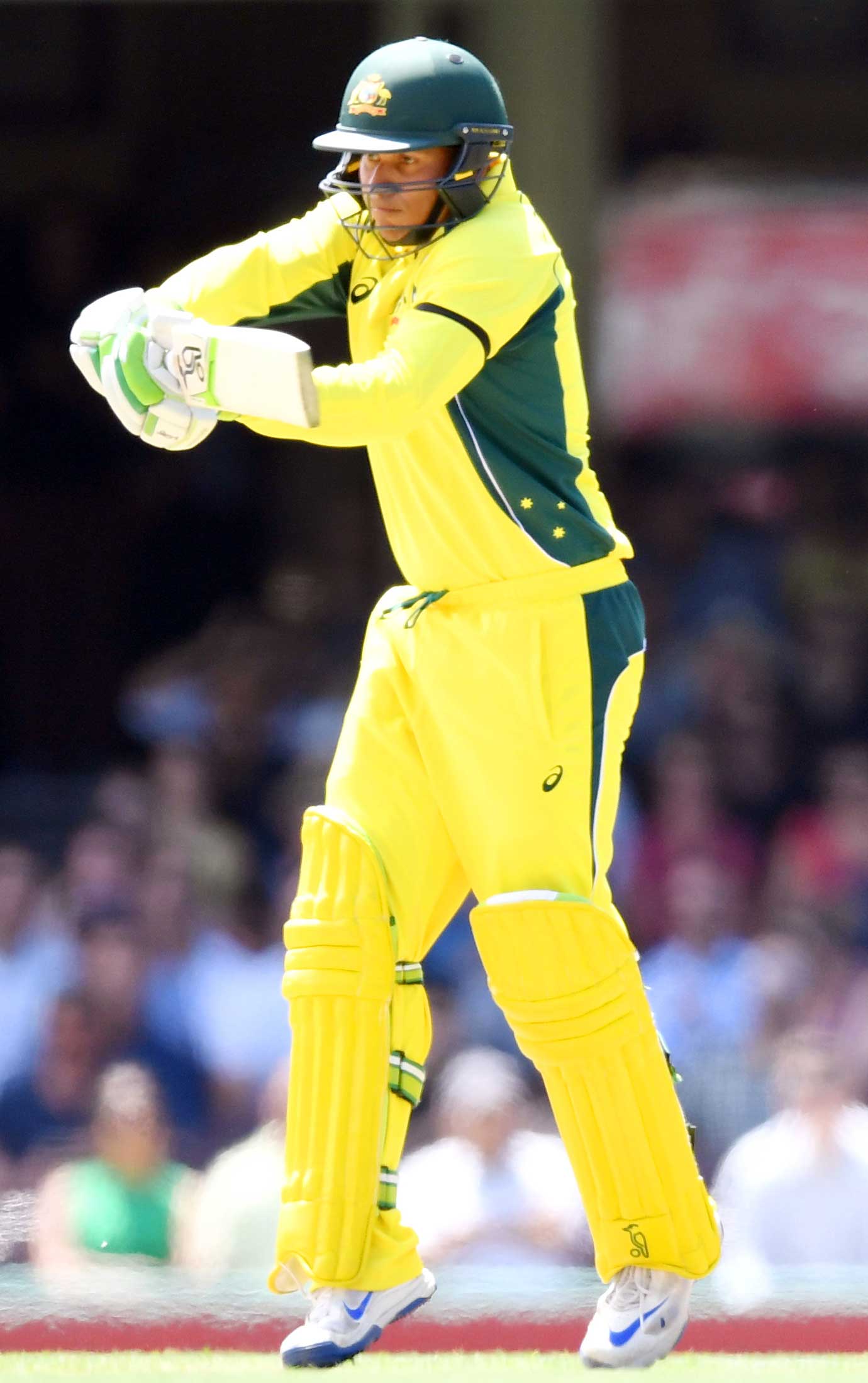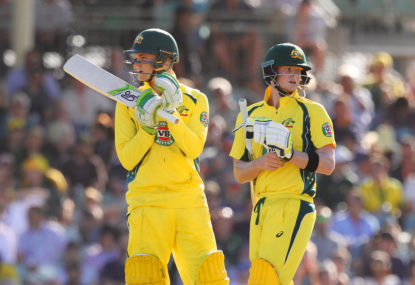Usman Khawaja and Peter Handscomb must tour India in October, Australia have missed James Faulkner, and Travis Head is becoming an invaluable asset – these are among the things we learned from the Champions Trophy.
Australia joined South Africa and New Zealand in making unexpectedly-early exits from the tournament, each failing to get out of the group stage. Here are three key talking points for Australia from this tournament.
Khawaja and Handscomb must tour India in October
Australia’s next ODI challenge is a proposed seven-match series in India in October. It is likely their squad will look significantly different to the one they took to England.
From the moment Australia’s Champions Trophy squad was announced many Roarers mirrored my concerns about the shortage of specialist batsmen and the reliance on big hitters.
There was widespread surprise Australia had not included at least one extra solid batsmen like Usman Khawaja, George Bailey or Peter Handscomb.
Instead the selectors favoured the bludgeoning approaches of Aaron Finch and Chris Lynn, both of whom were fortunate to make the squad given they did not have impressive form in the 50-over format behind them.
Lynn sat on the sidelines throughout the tournament. Finch, meanwhile, failed twice before making 68 in the do-or-die match against England.
The Victorian opener has averaged just 29 with the bat in his past 40 ODIs. If the series in India goes ahead, Khawaja should be given the entire series to stake his claim as David Warner’s opening partner.
Handscomb should join Khawaja on that tour. The Test incumbent is fresh from a dominant campaign in the English domestic one-day competition, hammering 444 runs at an average of 63 and a blazing strike rate of 109.
Handscomb’s nimble, confident play against spin is another reason he should go to India. One man who should not be involved in that series is NSW all-rounder Moises Henriques. Henriques was a surprise choice to bat at four throughout the Champions Trophy and continued his abysmal returns in ODIs, with a career batting average of nine from 11 matches.
With Mitch Marsh expected to still be unavailable to tour India due to injury, Victorian Marcus Stoinis should be Australia’s sole seam-bowling batting all-rounder in the squad for India.

(AAP Image/Paul Miller)
Australia missed James Faulkner
Bowling all-rounder James Faulkner would have been a very handy option when English batsmen Eoin Morgan and Ben Stokes were teeing off on Saturday.
It was a shock Faulkner was not taken to England given he has snared 27 wickets at an average of 23 in ODIs in the past year. More than that, the left armer adds valuable variety to the Australian attack.
With his array of cutters and slower balls, and vast experience bowling at the death in ODIs and T20s, Faulkner is well suited to slowing the charge of rampant batsmen.
As ODI batsmen become more and more aggressive with each passing year, 27-year-old Faulkner is the kind of adaptable seamer every side needs.
Yet I’ll follow this high praise by stating that Faulkner should not be selected for the series in India. He should be an automatic choice for the Australian squad, except for when they are facing India, whose batsmen patently have a hold over Faulkner.
Since the start of 2015, in his eight ODIs against India, Faulkner has averaged 46 with the ball at a sky-high economy rate of 6.16 runs per over. Compare that to his record over the same period against every other team – an average of 24 at an economy rate of 5.07 runs per over. The Indian batsmen are particularly adept at reading or predicting Faulkner’s changes of pace, hanging back in the crease to clatter them to the boundary.
The likes of Virat Kohli, Shikhar Dhawan and Rohit Sharma would be delighted to see Faulkner handed the ball. So he shouldn’t even tour.

(AAP Image/Dave Hunt)
Travis Head is a potential ODI star
Head has blossomed to the point that he is now one of Australia’s most important ODI cricketers. After an unremarkable start to his international career, the 23-year-old has been in commanding form over the past six months, piling up 545 runs at 61.
What makes Head such an appealing ODI batsman is his versatility. An opener in domestic 50-over cricket, the 23-year-old has shone against the new ball for Australia, averaging 57 across his three matches at the top of the order.
Just as impressively, he has managed to adapt to the middle order, averaging 38 across his 16 matches batting between four and seven in the order. Head’s flexibility extends beyond his position in the order – he also has shown a fine ability to play to the match situation, something which is foreign to some of the more cavalier Australian batsmen.
When Australia needs to consolidate, Head has the temperament and the skill to protect his wicket and work the ones and twos. At other times, when quick runs are required, Head can obliterate an attack. Batsmen who have multiple gears to their batting like this are a fantastic asset in the middle order.
In this way, Head reminds me of former ODI champion Mike Hussey.
As his batting has improved rapidly, Head has also come along nicely with the ball. While he is still some way short of being a genuine all-rounder, the off spinner is increasingly accurate and frugal. In the past six months he has given up just 5.24 runs per over, a very solid economy rate for a part-time spinner.
Realistically, Head should be the sixth or seventh bowling option in the team, rather than the fifth. And he will fall into this less demanding role once Marsh returns to full health.































































































